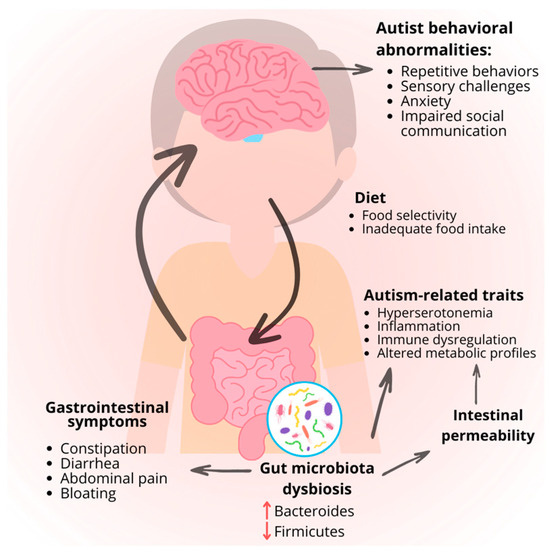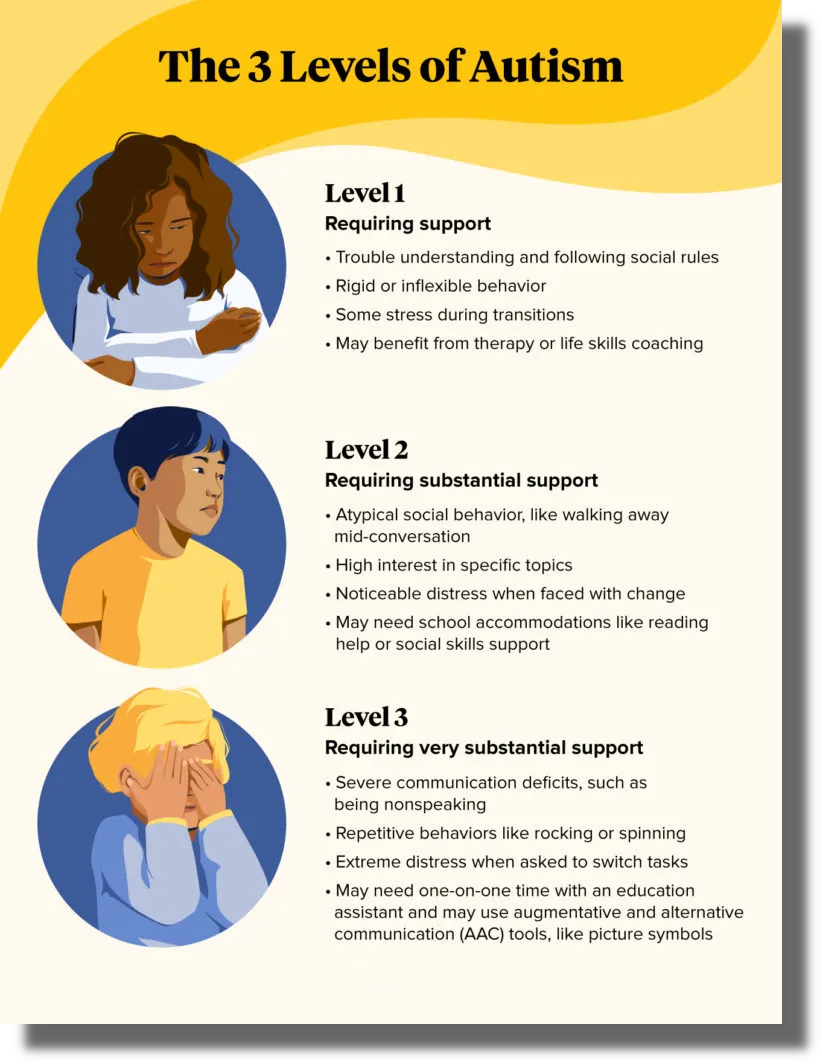How to explain autism with siblings—tips from an Aba Therapist
How to explain autism with siblings—tips from an Aba Therapist
Blog Article
Recognizing the Impact of Behavioral Autism on Life and Social Interactions
You may not recognize how deeply behavioral autism impacts everyday life and social interactions. Individuals on the range usually navigate a world loaded with communication obstacles and sensory overload. These challenges can lead to stress and seclusion, influencing their partnerships and overall well-being.
Specifying Behavioral Autism and Its Features
Behavioral autism, frequently described as autism spectrum disorder (ASD), incorporates a series of problems characterized by obstacles in social interaction, communication, and repetitive habits. You might discover that individuals with ASD usually struggle to analyze social signs, which can result in misunderstandings in discussions. They may discover it hard to establish eye get in touch with or engage in little talk, making social situations feel overwhelming.
Interaction troubles can manifest in various means, from postponed speech development to a preference for making use of less words. Repetitive actions, such as hand-flapping or rocking, can act as coping mechanisms to handle anxiety or sensory overload. These attributes can greatly affect day-to-day live, making it necessary for you to recognize and support those with ASD. By acknowledging these qualities, you can promote an environment that advertises acceptance and encourages effective interaction, aiding individuals with autism grow in their daily interactions.
The Range of Autism: Understanding Irregularity in Habits
Autism spectrum condition (ASD) isn't a one-size-fits-all medical diagnosis; it varies commonly among individuals. You might come across people that are very verbal and involve easily in discussions, while others may prefer solitary tasks or communicate non-verbally.
Furthermore, the means people with ASD reply to sensory input can vary significantly; some could be bewildered by loud sounds or intense lights, whereas others flourish in stimulating atmospheres. The range likewise includes distinctions in social interactions; some individuals might have a hard time to analyze social cues, while others navigate social setups with loved one simplicity. Understanding this variability is crucial, as it assists you value each person's special experience and tailor support to their specific needs, cultivating a more comprehensive setting for every person.
Communication Obstacles Encountered by People With Autism
When you communicate with individuals on the autism spectrum, you might notice their special interaction difficulties. They often face troubles with both nonverbal and spoken cues, which can affect their social interactions. Comprehending these barriers is essential for fostering much better connections and assistance.

Verbal Interaction Difficulties
Lots of individuals on the autism range experience verbal interaction troubles that can substantially affect their everyday interactions. You may discover it challenging to express your ideas, sensations, or needs plainly. This can cause disappointment for both you and those around you, as misunderstandings happen. You may deal with initiating conversations, maintaining a subject, or comprehending nuances in speech. Commonly, you may prefer using basic language or repetitive expressions, which can limit your ability to involve in deeper discussions. Your tone, rate, or volume could not straighten with social expectations, creating others to misinterpret your intentions. Recognizing these obstacles can help you and your support network establish techniques to improve interaction and promote better links with others in your life.
Nonverbal Interaction Barriers
Verbal interaction isn't the only difficulty individuals on the autism range face; nonverbal communication barriers can be just as substantial. These obstacles can lead to misunderstandings or false impressions of social cues, making communications feel complex or frustrating. By addressing nonverbal interaction, you can locate strategies to improve your social experiences and boost your total quality of life.
Social Interaction Impacts
Social communications can commonly feel overwhelming due to the unique communication difficulties dealt with by people with autism. Recognizing these challenges can aid you locate methods to boost interaction, such as exercising social skills in secure setups or using visual help. Comprehending your needs permits you to browse social interactions with greater confidence and simplicity.
Social Communication and Connection Structure in Autism
While structure partnerships can be testing for people with autism, understanding their special point of views and interaction styles can cultivate purposeful Go Here connections. You might observe that numerous people on the spectrum choose direct interaction and might struggle with social signs or small talk. By being uncomplicated in your communications, you can aid produce an atmosphere where they feel comfortable.
Engaging in shared passions can additionally serve as a bridge to deeper links. Whether it's a pastime, a favorite show, or a shared passion, these typical strings can open doors to relationship.
Life Routine: Browsing Methods and difficulties
Maneuvering life regimens can be specifically testing for individuals with autism, specifically when unforeseen changes happen. You might discover comfort in having a structured routine, as it aids you expect what's following. It's regular to really feel anxious or overwhelmed when disturbances take place. To browse these obstacles, consider carrying out aesthetic routines or lists. These devices can provide clearness and peace of mind.
Developing a routine that consists of sensory breaks can also be advantageous. This assists develop an understanding environment.
Lastly, practice mindfulness techniques to manage tension and stress and anxiety. Simple breathing exercises or grounding techniques can make a substantial distinction. By including these approaches, you can improve your day-to-day routine and lessen disturbances, making life really feel extra workable.
Toughness and Capacities of People on the Autism Spectrum
Recognizing day-to-day live regimens is simply one aspect of the autism experience. Lots of individuals on the autism range have impressive toughness and capacities that establish them apart. You might discover that your attention to detail is remarkable, enabling you to excel in tasks that call for accuracy and focus. Your capability to think outside package can result in ingenious remedies in numerous scenarios.
Moreover, your memory abilities usually radiate, specifically in locations of passion. Autism Behavioral Therapy. This knack for retaining information can make you a useful source in areas like innovation, science, or art. You may likewise display solid aesthetic thinking, allowing you to imagine complicated ideas and solve troubles artistically
Additionally, your unique point of view on the globe can promote empathy and understanding in others, enriching social communications. Accepting these strengths not only enhances your confidence but also assists others value the diverse abilities you give the table.
Producing Inclusive Environments for Individuals With Autism
Creating comprehensive settings for individuals with autism starts with creating sensory-friendly rooms that deal with their distinct requirements. You can also foster chances for social interaction, assisting to develop connections and friendships. By making these changes, you'll contribute to a more welcoming atmosphere for every person.
Designing Sensory-Friendly Spaces
While developing sensory-friendly spaces, it's important to reflect on the unique requirements of people with autism. Integrate quiet areas where individuals company website can recharge and retreat when overwhelmed. Include aesthetic routines or clear signage to help people browse the area with confidence.
Advertising Social Interaction Opportunities
Designing sensory-friendly areas not only addresses private convenience yet likewise sets the stage for meaningful social interactions amongst individuals with autism. To promote these interactions, develop comprehensive settings that invite involvement. Organize structured tasks, like art classes or group games, that urge collaboration without frustrating sensory input. Use visual help and clear interaction to assist everybody engage conveniently. Motivate peer mentoring, combining individuals with autism with helpful peers who can lead them through social scenarios. In addition, consider organizing routine community occasions that commemorate neurodiversity, fostering acceptance and understanding amongst all individuals. By executing these techniques, you can improve social opportunities, aiding people with autism build friendships and enhance their social abilities in a risk-free, welcoming environment.

Regularly Asked Questions
Exactly How Can Buddies Support Somebody With Behavioral Autism?
You can sustain a close friend with behavior autism by being client, paying attention actively, and respecting their boundaries. Take part in tasks they delight in, interact openly, and produce a comfortable atmosphere where they really feel valued and recognized.
What Resources Are Readily Available for Parents of Kid With Autism?
You can discover numerous resources for parents of youngsters with autism, including assistance teams, instructional websites, and local community services. Getting in touch with other parents can also provide beneficial insights and shared experiences to aid navigate obstacles.
Can Behavioral Autism Adjustment Over Time?

Yes, behavior autism can alter gradually. You might observe shifts in interaction, social skills, and habits as your kid grows. Early intervention and assistance commonly play important duties in these developing modifications.
How Do Sensory Level Of Sensitivities Influence Every Day Life?
Sensory level of sensitivities can make daily experiences frustrating. You may have problem with loud noises or brilliant lights, causing stress or avoidance. Finding environments that fit your requirements can significantly enhance your convenience and total day-to-day live.
What Prevail Misconceptions Concerning Behavioral Autism?
You may believe behavioral autism just impacts communication abilities, yet additional info it's more complex. Several presume individuals do not have empathy or knowledge, which isn't real. Recognizing these mistaken beliefs assists foster approval and support for those on the range.
Behavioral autism, typically referred to as autism range condition (ASD), incorporates an array of problems characterized by challenges in social communication, interaction, and repeated behaviors.Social interactions can commonly really feel overwhelming due to the distinct communication obstacles encountered by individuals with autism.Designing sensory-friendly spaces not just addresses individual comfort but also sets the stage for purposeful social communications among individuals with autism. Encourage peer mentoring, coupling people with autism with supportive peers who can assist them with social situations. By executing these methods, you can boost social chances, assisting people with autism develop relationships and reinforce their social skills in a secure, welcoming environment.
Report this page